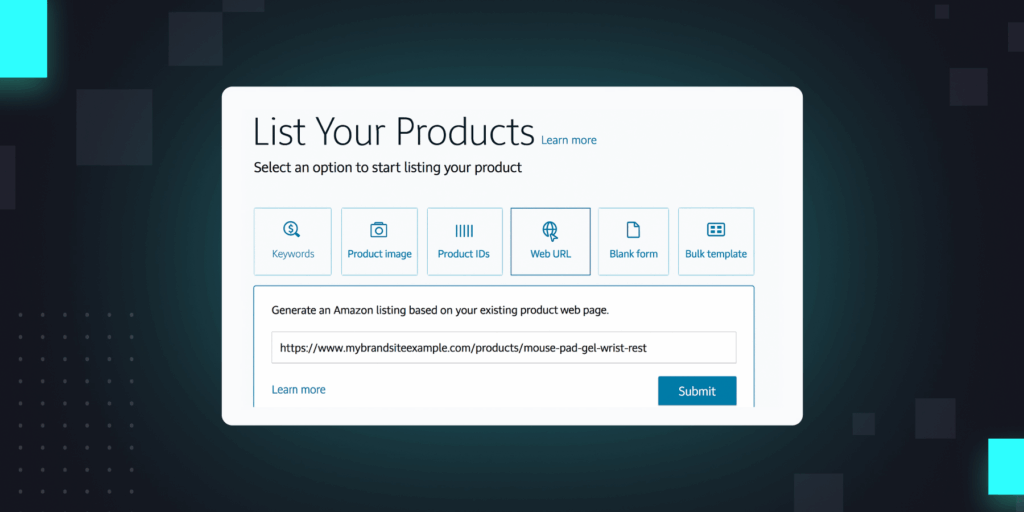Most shoppers start their Amazon purchase journey with the search bar. Understanding the search terms customers are using to find you is therefore core to your advertising strategy.
The problem is, analyzing your search term data can be challenging.
What if you could take your search terms one step further?
Recently, we at Intentwise built a way to detect new patterns in your search term data. We created a feature that identifies the specific words and phrases that perform best across all of your terms.
With a glance, you can answer the questions like: What words and phrases are performing well, and which are not? Or: What words and phrases are not currently part of the keywords you are advertising on?
You can use those answers to optimize your search terms. Negative match the low-performing words and phrases, and add the appropriate ones you are missing as keywords.
That new feature is called N-Grams.
Wait, what is a N-Gram?
N-Grams can be a little confusing, but we promise they are well worth understanding. Bear with us a bit.
At their most simplistic, N-Grams are search terms, broken down into parts.
To create a N-Gram, you take an existing search term, and split it into its component parts. Then, roll up performance of those component parts—those N-Grams—to identify high- and low-performing phrases.
Let’s start with a very basic example. You’re a brand that sells sneakers, and one of your top search terms is “running shoes women.”
First, break it up into all of its component parts: “running,” “shoes,” “women,” “running shoes,” and “shoes women.” These are each N-Grams.
Next, analyze the performance of those N-Grams across all of your search terms that contain them. Let’s take “shoes women” as an example. As we discussed, that phrase appears in the search term “running shoes women.” But it probably also appears in “tennis shoes women,” “shoes women arch support,” and “shoes women running.”
When you create a N-Gram “shoes women,” you can then analyze the performance of all of the search terms that contain “shoes women.”
Why does this matter?
At scale, this data can tell you exactly which component parts are working well for you, and which are not. Let’s say you discover that your search terms with the N-Gram “shoes women” actually perform best, while the N-Gram “running shoes” is associated with some of the poorest results.
You can then start to take the necessary optimization actions.
What we’ve outlined above is a very simple example. But imagine running this at scale, across thousands of search terms.
What can N-Grams actually do for my brand?
There are two immediate actions you can take using N-Grams
#1. Negative-match low-performing keywords
Let’s say all of your running shoes have laces. When you analyze your search terms at the N-Gram level, you will be able to split up search terms like “women’s running shoes without laces” and “women’s tennis shoes without laces,” and see that the N-Gram “without laces” is associated with some of your worst performance.
You can then negate the N-Gram “without laces” to stop wasting money if needed.
#2. Identify new top keywords to add
Let’s take the example above, but flip it. You’re still a sneaker brand that only sells shoes with laces. But let’s say you have really great arch support.
The script will split up search terms like “women’s running shoes with arch support” and “women’s tennis shoes with arch support,” and uncover that the N-Gram “with arch support” is associated with the highest conversion rates.
Best part, it will flag that you don’t actually have “with arch support” as a keyword in your campaigns already.
Now you know that you should add that N-Gram to your keyword list.
You might be wondering: What does this all actually look like?
At Intentwise, we just rolled out N-Grams in our Ad Optimizer product. We’re extremely excited about it.
Here’s a view of how this appears in our platform:

We also make it easy to filter out the phrases that are performing badly (“N-Grams with zero revenue”) as well as the ones that aren’t currently in your keywords (“N-Grams not in keywords”).

That way, you won’t have to waste time combing through thousands of search term results.
How do you use N-Grams?
What we’ve described above is only the beginning of N-Gram-based analysis.
Eventually, we think N-Grams are going to unlock much bigger systemic analysis for brands.
Say you have a series of N-Grams like “red running shoe,” “black running shoe,” “green running shoe.” Soon you’ll be able to identify that “red,” “black,” and “green” are all part of an attribute called “color.”
Then you can use that as a lens for analytics. You can instantly figure out how much you spend on a particular color, and which colors perform the best and worst.
So how do you use it? The problem, of course, is that analysis at the N-Gram level is going to require a lot of data processing. You’ll be splitting up thousands of search terms into N-Grams.
You can’t use Excel for it.
To convert search terms to N-Grams, you’re probably going to need a software partner. Intentwise now offers an N-Grams feature, which we’re quite proud of.
But even if you don’t work with Intentwise, we think N-Grams will take your search advertising optimization one notch up.
(Want more content like this? Subscribe to our newsletter.)

![[Table] Blog Post (1) [Table] Blog Post (1)](https://www.intentwise.com/blog/wp-content/uploads/elementor/thumbs/Table-Blog-Post-1-qdy5lhjfb1whto2zv5cq6h6m75fvywxuvr0xv7iekg.jpg)





